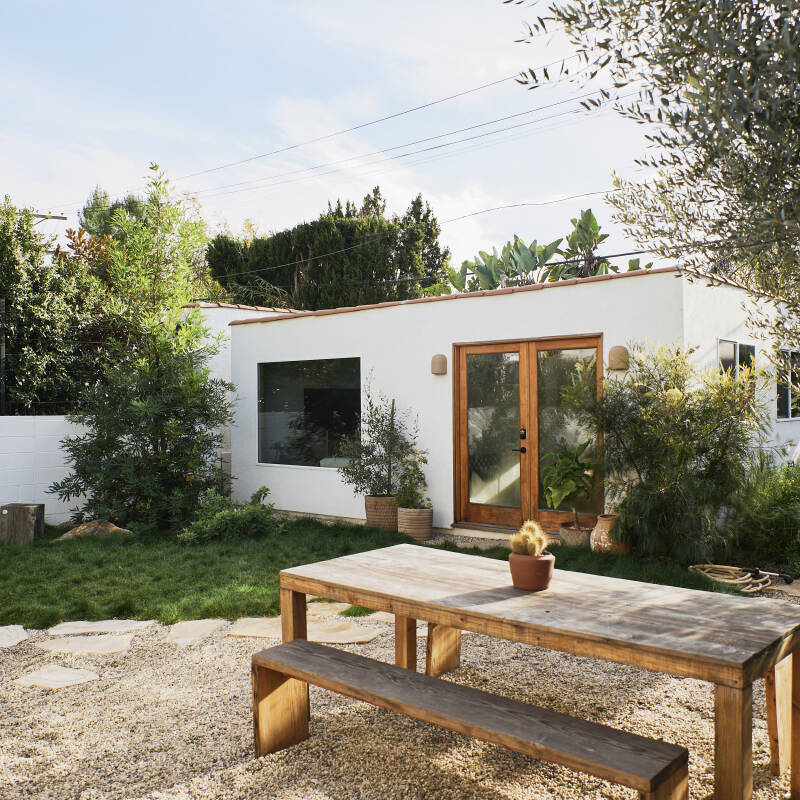Recently I learned that a rosarian (a person who cultivates roses and is an expert in the field) whose name is actually Rose and has a rose named after her, grows a rose garden in the historically foggy avenues of San Francisco. So, of course, I had to visit. And ask a lot of questions. If there was one person I wanted rose advice from it was Rose Gilardi.
Photography by Kier Holmes.
On how she got started as a roses expert:

As Rose and I strolled her flower-filled garden (100 large and 400 mini roses) on a surprisingly sunny San Francisco day, she shared, “As far as I can remember, I always had an interest in roses. My parents and grand-parents in Germany had gardens with roses and somehow they always drew my attention.” She then told me that in her first house there was a garden with a rose bush that happened to be her favorite color: dark velvet red with a powerful fragrance. She transplanted it to her present garden, and it’s still thriving today. (It took Rose seven years to identify the rose as ‘Charles Mallerin’, named for a rose grower and hybridizer in the 1920s and ’30s.)
On the pros and cons of spraying roses:

As a gardener who refuses to spray any chemicals on plants, I had to ask Rose if she sprays her roses to remedy inevitable rose ailments. “When I joined the San Francisco Rose Society in 1971, I was told to grow good roses, you had to spray them or they wouldn’t grow well in SF, certainly not well enough to be able to exhibit them in rose shows. So I sprayed every two weeks and grew beautiful roses.” This changed when the environmental movement started catching on. “Spraying was a chore that I dreaded every time, so one day I just stopped.” Apparently it took three years for her roses to catch on that they had to fight for themselves or perish. “I am much happier now growing roses,” she told me. Thankfully hybridizers have also wised up to the hazards of spraying chemicals and have started breeding roses that can withstand diseases on their own. “It’s still hard to get the message out to the public that it is okay not to spray roses,” Rose said. “We have to work with mother nature and be more tolerant of ‘imperfections.’ Nature has its reasons for everything and we can’t always have our own way without consequences.”
On her roses’ feeding schedule:
Around March or April, Rose starts feeding her roses with Maxsea Bloom fertilizer about every two to three weeks, then stops around October.
On allowing roses to complete their bloom:

Another interesting tip I learned from Rose is to let the fuller roses stay on the bush until they open all the way in order to allow pollinators to collect their pollen. “It’s impossible for pollinators to get to the pollen when the roses are not fully opened,” Rose said. “Plus I like seeing them on the bush as long as possible.”
On pruning roses:
I’ve always been told to cut roses back to a 5 leaflet leaf, but Rose shared, “I agree, but only if there is one. If there isn’t one, just cut to a strong enough stem that will support new growth and a bloom.” She told me that the larger the stem you cut, the stronger the new growth and the resulting bloom will be. “There really are no pruning tricks,” she cautioned. “Just have confidence that you can’t make a mistake. Roses will forgive you, and remember, they are survivors.”
On the hard prune:
Where Rose lives, she luckily doesn’t get prolonged frosts, and over the years has found that her roses are the most dormant between December and February, hence her recommendation to prune during those months. “Sometimes if the weather is warm in those months, the sap still flows and you will see weeping after pruning (liquid coming out of the cuts and running down the stems) but don’t worry, it won’t kill the bush and it will callus over in a day or so.”
On how to make cut roses last longer:

The best are, according to this rosarian: most hybrid tea roses, floribundas, miniatures, climbing roses and shrubs. In other words, all roses can be used for cutting. Rose told me that, “fuller roses with the most petals will last longer in the vase than roses with fewer petals.” She also reminded me to cut the stems under water before placing them in the vase, and that it’s better to cut flowers in the early morning, preferable before sunrise, when the plants and blooms are till hydrated from the night.
On her most unique rose:
“The rose that always attracts so much attention is probably ‘Maroon Eight’, a dark red single miniflora with an illuminated yellow eye.”
For more on roses, see:
- In Appreciation of the Old Roses at Asthall Manor
- Ask the Expert: Jenny Barnes’ Way with Roses
- 10 Things Nobody Tells You About Roses









Have a Question or Comment About This Post?
Join the conversation